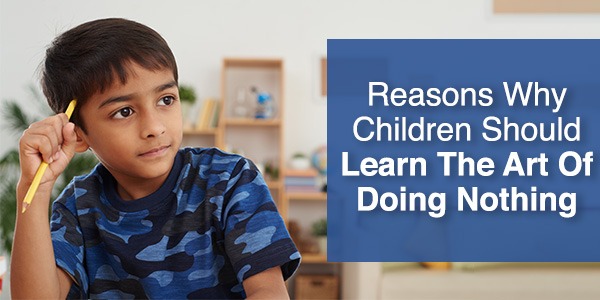
Take a time wind back to your childhood. Did you have an activity-packed summer vacation or days when you would relax under a tree with your cousins and friends? Did you make your own fun games that gathered the little ones from the neighborhood too? The time to unwind was a creative time for most of us. It meant we could imagine, play, create, observe, appreciate, learn, interact and do nothing.
But is it the same with our children? Unfortunately, today’s children can’t take the boredom. 15-20 minutes of idle time can whip them into a frenzy as every second of theirs is planned out. And that brings the significance of teaching children the art of doing nothing or simply enjoying nothingness.
Encourages Children to Explore
Unless children are at their own pace, they wouldn’t know what to do. Confidence can come from their own little achievements. While schedules can teach them time management, nothingness will teach them to enjoy the beauty in everything they come across.
Become Creative
It is in boredom that children will come up with new ideas. They will make friends and use time in a socially productive way. They get an opportunity to understand a life problem and may want to have a solution for it. It comes as a result of destressing which happens when doing nothing.
Build Tolerance
When children experience boredom, it helps build their tolerance. They naturally learn to cope with unpleasant experiences and come out of them successfully. It’s a great way to nurture emotional development.
Gets The Balance Right
As we live in times when parents and children have tight schedules throughout the day, having some time to idle is essential to get the balance right. Trying to ace everything can leave children stressed out. And parents should guide them to find happiness in nothingness.